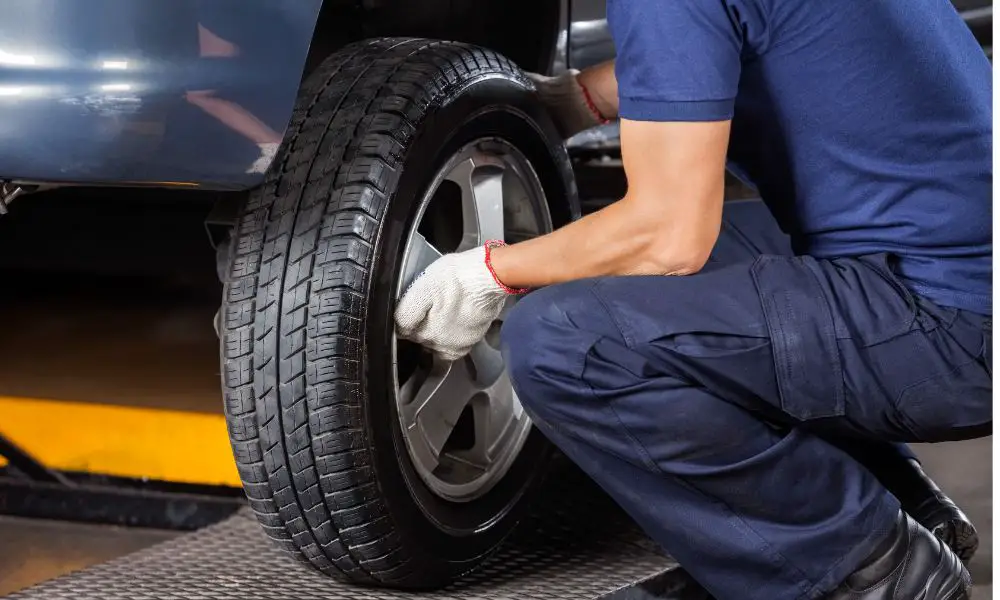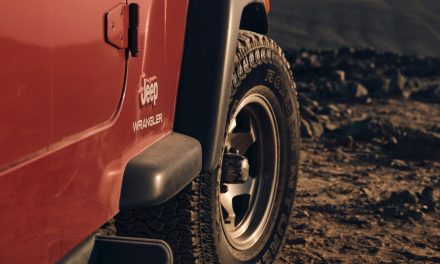Have you ever left a dealership after getting maintenance on your car, only to find that they over-inflated your tires? This can be frustrating because over-inflating your tires can cause damage to them, give you worse fuel economy, and give you considerably less traction on the road.
Dealerships don’t intentionally over-inflate your tires; they likely inflate them exactly where they should be. However, due to the differences in heat, the air in the tires will expand once they move from the cold shop to the warm road. This makes your tires over-inflated, even though they may not have been on the cool shop floor.
How can you verify this is the case? Most people check their tire pressure after driving around when the tires are warm. However, check your tire pressure at night when things have cooled down to find out what PSI your tires are. More than likely, you will find the pressure is right on point.
Table of Contents
What do you do if your tires need to be more inflated?
So, that said, your tires will be warm while driving, so you should make sure to adjust the pressure in the tires to the right temperature when they are warm! How do you do this?
- Locate the valve stem on the tire. Then, twist the cap, which will result in finding the actual stem; this generally will be rubber, with a metal tip on the end.
- Release air from the tire by pushing down on the pin inside that metal tip. You can do this with any small tool. However, most tire gauges will also have a point you can use.
- When the users release the air, they can quickly check the pressure with a tire gauge until they have reached the desired PSI unit.
Now that you have fixed the issue, you should keep a close eye on your tire pressure from here on out to ensure you are getting all the benefits of correct tire pressure. So, where can you find the information on the correct tire pressure for your vehicle?
- It will be seen on the vehicle manual owned by the owner
- A sticker will be labeled on the driver’s side of the door, along with a glove box and fuel door. Users can also move to online mode, where they will find a tool for checking tire pressure.

What happens to your car if they are over-inflated?
1. Wearing out tires very early
Overinflated tires will result in wearing down faster on the outer edges. Tires, in this case, will not long last for their intended lifespan.
It is like an over-filled balloon, which will cause stiffness and inflexibility and lead to damage. In this case, tires can easily bulge in the center of the tread, when you are about to over-inflate.
2. Loss of traction
Tires that are over-inflated have less traction! This is because the tire cannot “squish” against the road, meaning less surface area is touching the road at any time.
Less tire touching the road means less traction, so you can slip around more while driving. None of these things are good.
3. A harsher ride than normal
The more air your tires have, the harsher the ride will be. Tires are built to have some give and are one of the most biggest components helping you not feel bumps you go over (it’s not just the suspension doing the work).
Side Note: As wheels have gotten bigger (just like the vehicle, especially pickups) and tires smaller, we have gotten harsher rides and have had to spend more on suspension to compensate for it. If you want a smoother ride, think about getting smaller wheels with more tires on them to help with that.
Frequently Asked Questions
Is it better to have over-inflated or under-inflated tires?
For everyday driving, you should really not have over-inflated or under-inflated tires. Both can be dangerous for road driving and result in worse gas mileage or an accident. Tires are the only things touching the road and should be taken care of.
How long can you drive on a tire with wire showing?
If you see steel wiring coming out of your tire, don’t drive on it. There isn’t a “how long can I drive on it.” situation. It would be best to replace that tire ASAP; otherwise, it could cause an accident.
What happens if your tire pops on the highway?
Make sure to pull over right away and replace the tire. You can call a company to do that for you, or if you are so inclined, you can replace the tire with the spare your vehicle “may” come with.





